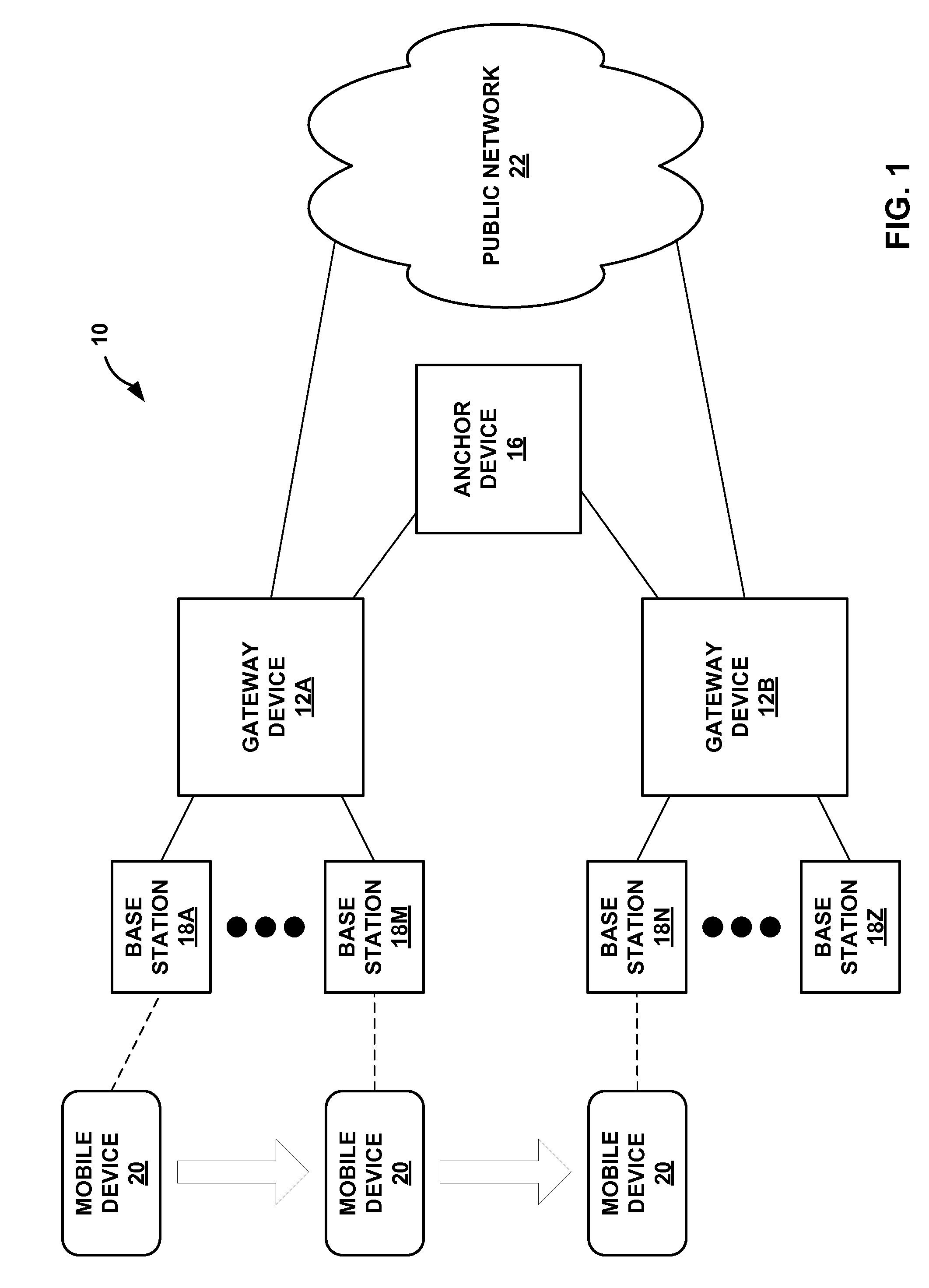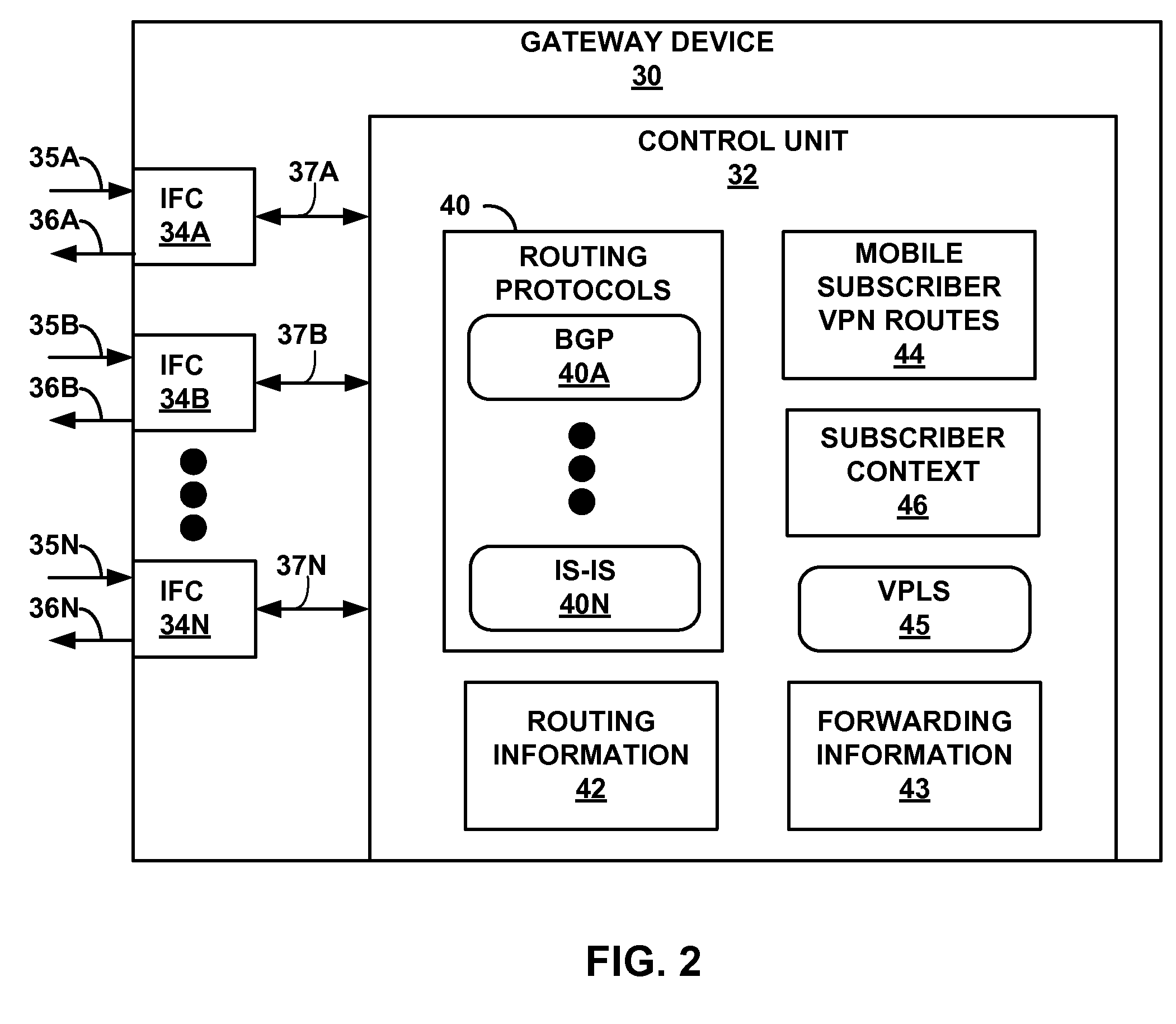Network-based micro mobility in cellular networks using extended virtual private LAN service
- Summary
- Abstract
- Description
- Claims
- Application Information
AI Technical Summary
Benefits of technology
Problems solved by technology
Method used
Image
Examples
Embodiment Construction
[0043]FIG. 1 is a block diagram illustrating a system that includes an example cellular network 10. As shown in FIG. 1, cellular network 10 includes gateway device 12A, 12B (“gateway devices 12”), as well as anchor device 16, base stations 18A-18Z (“base stations 18”), and a mobile device 20. In the example of FIG. 1, cellular network 10 couples to a packet-based public network 22, which may, for example, represent the Internet or any other packet-based, publicly accessible or private computer network. Mobile device 20 may also be referred to as a mobile subscriber. While shown for ease of illustration as including only two gateway devices 12, one anchor device 16, and one mobile device 20, cellular network 10 may comprise a plurality of gateway devices and a plurality of anchor devices that service a plurality of mobile devices. The invention therefore should not be limited to the exemplary embodiment depicted in FIG. 1.
[0044]Base stations 18 have radio connectivity with mobile dev...
PUM
 Login to View More
Login to View More Abstract
Description
Claims
Application Information
 Login to View More
Login to View More - R&D
- Intellectual Property
- Life Sciences
- Materials
- Tech Scout
- Unparalleled Data Quality
- Higher Quality Content
- 60% Fewer Hallucinations
Browse by: Latest US Patents, China's latest patents, Technical Efficacy Thesaurus, Application Domain, Technology Topic, Popular Technical Reports.
© 2025 PatSnap. All rights reserved.Legal|Privacy policy|Modern Slavery Act Transparency Statement|Sitemap|About US| Contact US: help@patsnap.com



